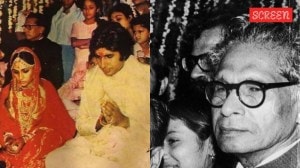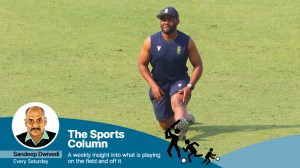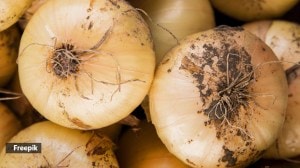Beats That Crack the Glass Ceiling
Rimpa Siva, one of the few female tabla players in the country, is a recipient of this year’s Bismillah Khan Yuva Puraskar.
 Rhythm Divine: Tabla player Rimpa Siva at her Kolkata residence. (Express photo by Partha Paul)
Rhythm Divine: Tabla player Rimpa Siva at her Kolkata residence. (Express photo by Partha Paul)
In the densely populated Beleghata, a cramped Kolkata neighbourhood, where cows, vegetable vendors, kitchens and hand-pulled rickshaws struggle for space every day, Rimpa Siva’s birth wasn’t the happiest occasion for her tabla-player father Swapan Siva. “I wondered that day: how was a daughter to carry forward my legacy in an instrument I so dearly loved and which was only played by boys?” says Swapan. His prejudice was challenged when he saw a five-year-old Rimpa effortlessly picking up a difficult lesson he had just taught his “male” students. She was playing like these boys. “And better. I knew she was special,” says Swapan.
Rimpa, unaware of her father’s strange conundrum back then, says, it was the sound of the instrument that made her happy. “That’s all I heard in the house all day. There was something so fun about the sound of these two simple drums,” says Rimpa, when she meets us in a small music room lined with a number of trophies and dotted with pictures of her with Indian musicians, whose contributions to the world of music have been significant. There is she, laughing alongside the late Pandit Ravi Shankar, and tabla maestro Ustad Zakir Hussain, among others. A heavily stamped tabla case is neatly tucked in a corner while the cupboard next to it is lined with tablas.
The shy Rimpa is an absolute contrast to the confident, immersed performer, who has long been hailed as a child prodigy. She’s performed at concerts since the age of nine and has found fans in music legends like Hussain and Pandit Hariprasad Chaurasia. She accompanied Chaurasia on stage when she was only 14 and toured with Pandit Jasraj and Pandit Ajoy Chakraborty. “Her nimble fingers follow lightning speed,” says Kolkata-based Chakraborty, a foremost representative of the Patiala gharana.
Now, the Sangeet Natak Akademi has awarded Rimpa, among others, with the Ustad Bismillah Khan Yuva Puraskar, a coveted honour. The same award was rejected by Amaan Ali Khan, 42, and Ayaan Ali Khan, 40, saying that they weren’t “yuva” anymore and that the award had been given to them without their consent.
“I have got many awards. But this one is special because it is from the Sangeet Natak Akademi. The fact that your own fraternity is acknowledging you is wonderful,” says Rimpa, who has also been the subject of a 26-minute French documentary titled Rimpa Siva: Princess of Tabla.
Rimpa’s intense training honed the improvisational skill necessary for a player to bring something of their own to a performance. She was also told that she was different from her regular friends. “Once I was playing with my friends, and my father said that I needed to understand that I was special and not like them. As isolating as that thought was, I did know that he wasn’t wrong,” says Rimpa Siva, 32, who was never interested in make-up, clothes or wanting to look pretty.
“The idea of looking pretty never appealed to me. I just wanted to play better than everyone else,” says Rimpa. Her father helped her perfect her playing technique and to adapt to the Farrukhabad style, one of the six prominent gharanas of tabla playing in the country. The baaj (playing style) of the gharana is characterised by extensive resonant strokes of the daya (the right tabla) and intriguing rhythm sructures.
When someone played a tape of her music to Hussain, he was struck by what he had heard. He thought that the musician was at least 18-19 years old. “I was nine then. He couldn’t guess that someone so young was playing,” says Rimpa. Two years later, when Hussain visited Kolkata, he asked to meet her and took a look at her fingers. She remembers the meeting as a “strange dream”. “He not only congratulated me and advised on a musician’s health and good diet, he gave me his blessings and asked me to keep at it. I never stopped after that,” says Rimpa, whose playing technique and virtuosity also found appreciation from sarod maestro Ustad Ali Akbar Khan during a US-tour in the late 1990s.
And soon, in the predominant world of male percussion, where the myth “how percussion requires more biological strength” has been popular, Rimpa began playing. “It is physically challenging to play the tabla. But only as much as it is for a man,” says Rimpa, who was also inspired by other female tabla players such as the late Aban Mistry and Anuradha Pal. “My tabla-playing also paved the way for many other young girls to begin learning. At this point, so many girls start training by wanting to be tabla players. Life’s good,” says Rimpa.
She enjoys solo concerts much more than being an accompanying artiste. “I have the full stage then and can show off a little in terms of my technique. But accompanying requires me to be completely in sync with the main artiste,” she says. For many years, she had left the decision of choosing her concerts to her father. He accompanied her everywhere, and also acted as her manager. “She manages on her own now. I have to let go,” says Swapan. Rimpa laughs, “A father will never let go. But yes, he’s taught me everything I know,” she says.



- 01
- 02
- 03
- 04
- 05




























